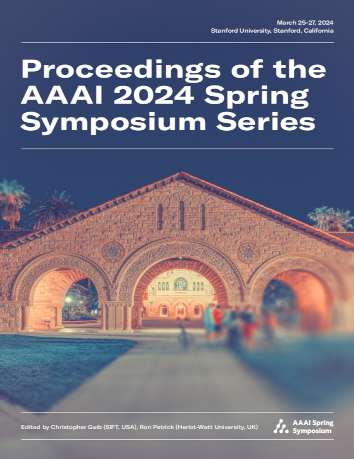Agreeing to Disagree: Translating Representations to Uncover a Unified Representation for Social Robot Actions
DOI:
https://doi.org/10.1609/aaaiss.v4i1.31815Abstract
Researchers and designers of social robots often approach robot control system design from a single perspective; such as designing autonomous robots, teleoperated robots, or robots programmed by an end-user. While each design approach presents a tradeoff between some advantages and limitations, there is an opportunity to integrate these approaches where people benefit from the best-fit approach for their use case. In this work, we propose integrating these seemingly distinct robot control approaches to uncover a common data representation of social actions defining social expression by a robot. We demonstrate the value of integrating an authoring system, teleoperation interface, and robot planning system by integrating instances of these systems for robot storytelling. By relying on an integrated system, domain experts can define behaviors through end-user interfaces that teleoperators and autonomous robot programmers can use directly thus providing a cohesive expert-driven robot system.Downloads
Published
2024-11-08
How to Cite
Elbeleidy, S., & Wilson, J. R. (2024). Agreeing to Disagree: Translating Representations to Uncover a Unified Representation for Social Robot Actions. Proceedings of the AAAI Symposium Series, 4(1), 346-352. https://doi.org/10.1609/aaaiss.v4i1.31815
Issue
Section
Unifying Representations for Robot Application Development - Research Papers

